Rob Tarr:
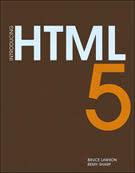
Introduction to HTML5
By Remy Sharp & Bruce Lawson
I think one of my favorite things about this book is the practical approach to using new technology. I’ve used it several times recently as a reference to best practices with new HTML5 elements, which has been helpful in trying to write clean, semantic HTML5 code.
Bruce and Remy cover a good deal of the new HTML5 spec, targeting the features that seem to be most useful for building websites in a fragmented and partially supported browser environment. They also provide just enough humor to keep it fun.
Ryan Buttrey:
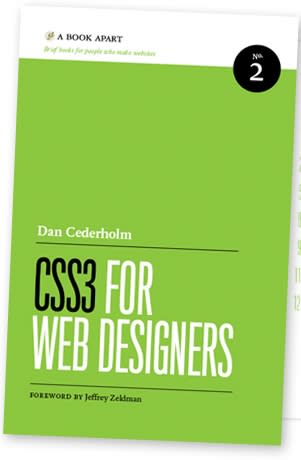
CSS3 for Web Designers
By Dan Cederholm
I picked up this book for two main reasons. First, it’s by Dan Cederholm. I’ve read and loved everything he’s put out. Second, I’m passionate about CSS and was looking for practical ways to start using CSS3 now. This book overviews some of the basic CSS3 properties usable today like CSS transitions and multiple backgrounds.
Overall, I was very happy with the book. It is concise, yet thorough. The basic point of the book was to demonstrate that you don’t have to wait until CSS3 is done to start using it. You can use it now for those non-critical visual aspects of the design––such as interaction, movement, feedback and visual rewards, enhancing the experience for the browsers that are advanced enough to support it (and providing graceful solutions to those that don’t). I’ve returned to this book numerous times already as a reference, and would most definitely recommend it for every front-end web developer.
Drew Clemens:
Calvin & Hobbes Complete Collection
By Bill Watterson
Honestly, the latest book I’ve read is one of the volumes of my Calvin & Hobbes Complete Collection. I pulled it out to use in my bio photos for the Sparkbox website, and I couldn’t put it down. That collection is seriously one of my few prized material possessions. If a life lesson isn’t in a Calvin and Hobbes strip, it doesn’t need to be learned. At least, I’ve never learned it.
However, my plan is to next tackle Kristina Halvorson’s Content Strategy for the Web. Lots of good lessons in there, I’ve heard. Though I’m sure it will be lacking in the subjects of killer monster snowmen and transmogrifier guns.
Ben Callahan:
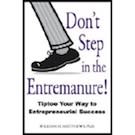
Don’t Step in the Entremanure!
by William Matthews, Ph.D.
The most recent book I’ve read from cover to cover is titled Don’t Step in the Entremanure! by William Matthews, Ph.D.
This book is a short but powerful set of easy to read chapters that each contain invaluable nuggets of truth for the young business owner. While I learned something critically important from each page of this book, chapter four, entitled “Hire the Best People Available” stood out as one of the most beneficial. As a service company, our most valuable assets are our people. This is why we treat them with respect and place a high value on education and growth.
I truly believe this book is a gem for new business owners. Take the opportunity to learn from other’s experiences by taking in this quick but potent read.
Rob Harr:
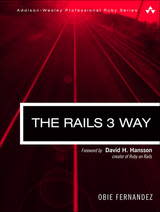
The Rails 3 Way
By Obie Fernandez
The Rails 3 Way is an excellent reference guide for professional Rails 3 development. While this is not a beginner’s book, it does go into several important topics that every Rails developer has to deal with. Even the sections that aren’t deeply explored provide a nice overview and suggest resources on where to learn more.
I would recommend this book to anyone who has been doing Ruby on Rails development and is ready to jump into Rails 3.
Maria Norman:

The Tipping Point
By Malcolm Gladwell
The last business-y book I read was The Tipping Point by Malcolm Gladwell. It discussed different types of social phenomenon and offered theories as to why they happen. Beyond theory, there were a ton of cold, hard findings from different psychological and sociological studies.
Gladwell pointed out an interesting contradiction, “We are about to enter the age of word of mouth, and that, paradoxically, all of the sophistication and wizardry and limitless access to information of the New Economy is going to lead us to rely more and more on very primitive kinds of social contacts” (264).
Especially pertinent to content strategy, there were some suggestions for making messages more “sticky”: how to actually get to people, how to make it easy to remember, and how to provide a motive for people to pass on the message.
The Tipping Point was so engaging that Gladwell’s other books, Blink and Outliers, are now on my (lengthy) reading list.
Andy Rossi:
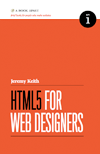
HTML5 for Web Designers
By Jeremy Keith
Even though the book was a series of examples with simple solutions, it’s a necessary addition to the web developer’s toolbelt. However, the introductory chapters of the book were the most influential.
Jeremy Keith masterfully took the convoluted and tumultuous history of the HTML spec and broke it down into easy to understand chunks. He explained the purpose of the standards body, the changes of the syntax in the spec, and the purpose of each change in a comical and interesting way.
The examples were also broken down into the what and why system. Keith didn’t just assume that the reader knew why the HTML5 tags should be used and at the same time didn’t dumb down the explanations for the lowest common denominator.
This book was interesting and informative without being dry and monotonous.
What I Took Away:
The pivotal quote from the book came from page 7: “There won’t be a single point in time at which we can declare that the language is ready to use.” The point can be made that the web isn’t something to wait around before experimenting. HTML5 can be used as soon as a browser supports features. But, at the same time, it’s not the designer/developer’s job to sit motionless while waiting for a feature to be fully supported. Web Standards don’t come from some governing body. They come from developers actually using the features. We set the standard.


